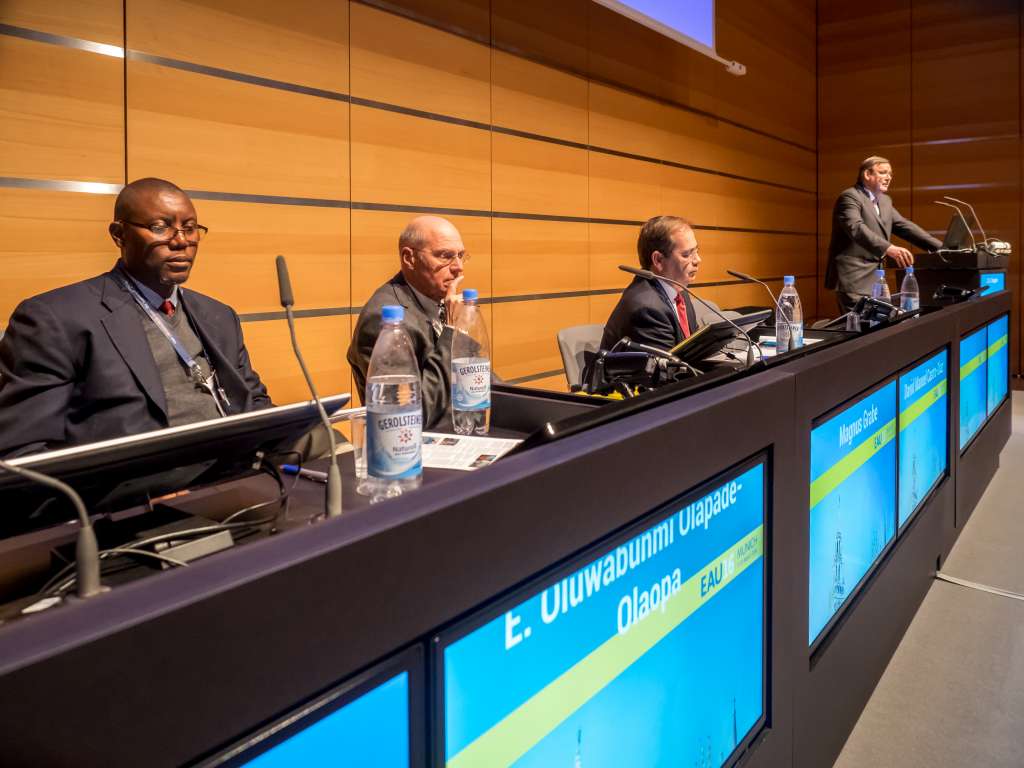African urologists face chronic challenges
EAU joint meetings with Africa and Iran yield insights
Pan African Urological Surgeons Association (PAUSA) represents urology in the whole African continent, which means addressing patient care in a vast range of settings and significantly different cultures.
The EAU yesterday hosted a joint session with PAUSA, “Update on Uro-Oncology, functional, and reconstructive urology.” PAUSA was represented by their president, E. Oluwabunmi Olapade-Olaopa (Nigeria), who co-chaired with David Castro-Diaz (ES).
In general the African medical environment is less cash-rich than in Europe or North America. Said Prof. Olapade-Olaopa, who works in Nigeria’s third largest city, Ibadan, as he described some of the practical issues his department faces.
“In Ibadan we have the largest urology department in West Africa, with five consultants. But there are only 130 urologists in the whole of Nigeria, which has a population of 170 million. What this means, is that small changes to procedures can make a huge difference to practice: little things do matter a lot, and in our work we have to balance more advanced urology with practical and financial realities.”
Castro Diaz pointed out: “Prostate cancer seems to be more common in Africans than in Europeans in general. We also find that in Africans it tends to be more aggressive, so there have been arguments for screening. But for that you need to have the infrastructure to treat the increased number of cases, so at present it can’t really be justified.” He also quoted from Dr. A Takure’s (NG) talk on bladder cancer, pointing out how increasing industrialization and a dropping rate of schistosomiases had led to transitional cell bladder cancer rates increasing, while rates of squamous cell bladder cancer are dropping.
EAU Secretary General Chris Chapple, while reviewing the state of urethroplasty, took time to thank PAUSA and Prof. Olapade-Olaopa. “We’re really pleased with a good session, and we want to continue to develop good links with PAUSA.”
Meanwhile, at the joint EAU- Iranian Urological Association (IUA) meeting, new treatment options in surgery, chemotherapy and trimodality therapy (TMT) for muscle invasive bladder cancer (MIBC) were extensively discussed.
“The key variable driving surgical and postsurgical outcomes is the skill and experience of the surgeon or surgical team, regardless of whether or not robot assistance is used,” said Prof. Walter Artibani (IT), one of the speakers at the joint session. Regarding new surgical options, he mentioned that reports of complications after radical cystectomy (RC) and urinary reconstruction would benefit from using standardized criteria. They should also be assessed from the intraoperative period until at least three months postoperatively with a meticulous follow-up, including complications which occur outside of the home institution.
With regards overall complication rates, robot-assisted radical cystectomy (RARC) and open radical cystectomy (ORC) are comparable in terms of overall complication rates, rates of positive surgical margins (PSMs), lymph node yields (LNYs), and intermediate- term oncologic outcomes. Artibani: “The lack of longer term studies limits the ability to assess the cancer-specific outcomes following RARC at 10 year follow-up.”
Differences between RARC and ORC are the rates of estimated blood loss (EBL) during surgery and the need for transfusions which are lower in RARC. Extended and highly extended robotic lymph node dissections (LNDs) are feasible and should be performed, even though they add to overall operative time. The same applies to nerve-sparing procedures – whether RARC or ORC – which may result in more favorable functional outcomes and should be pursued in appropriate patients.
Hospital costs of RARC appear to be significantly higher than for ORC, although a complete accounting of costs associated with these surgeries has not been completed. Therefore, well-controlled cost-effectiveness studies are urgently needed; the preferred method of cost analysis is quality-adjusted life expectancy in relation to total costs of treatment, and an incremental cost-effectiveness ratio is used as the key outcome measure.
When discussing chemotherapy, Artibani emphasized that the meta-analysis on adjuvant chemotherapy – which featured randomized trials – faced a number of limitations, including various definitions of disease-free survival (DFS) which makes it very difficult to draw any real conclusions from it and should therefore be interpreted with caution. “When comparing neoadjuvant chemotherapy with adjuvant therapy, the first is characterized by a higher level of evidence, better tolerance, no rise in perioperative complications and clinical staging whereas the latter has a lower level of evidence, worse tolerance, postoperative complications in 30% of patients and pathological staging,” he said.


